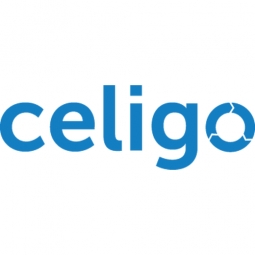下载PDF
Huppin’s: Streamlining and Automating Multi-Channel Sales with IoT
技术
- 应用基础设施与中间件 - 数据交换与集成
- 应用基础设施与中间件 - 中间件、SDK 和库
适用行业
- 电子产品
- 海洋与航运
适用功能
- 销售与市场营销
- 仓库和库存管理
用例
- 库存管理
- 拣选/分拣/定位
服务
- 系统集成
挑战
Huppin's 是一家位于斯波坎的消费电子零售商,在整合所有销售渠道的交易方面面临着重大挑战。他们在 Magento 上运行两个网站,一个面向区域客户,另一个面向全国客户,以及亚马逊等第三方市场上的其他店面。当他们开始实施 NetSuite 作为他们的 ERP 时,他们需要一个合作伙伴来统一他们的直接订单和第三方订单。他们的目标是简化和自动化来自各个店面的这些交易的处理。如果没有自动化,他们将在订购高峰期面临障碍,从而抑制他们的成长和探索新机会的能力。
关于客户
Huppin's 是一家家族拥有的消费电子零售商,总部位于华盛顿州斯波坎。该公司已经运营了四代,销售各种电视、音频、相机和智能家居产品,并提供个性化的客户服务。在实体店为区域客户提供数十年服务后,他们推出了 OneCall.com 网站,以将业务扩展到全国。他们在 Magento 上运行两个网站,一个面向区域客户,另一个面向全国客户,以及亚马逊等第三方市场上的其他店面。
解决方案
Huppin's 选择 Celigo 的 Magento-NetSuite 集成应用程序 (SmartConnector) 将 Magento 与 NetSuite 集成。预先构建的集成流程使他们能够从 Magento 导入订单和结算,并从 NetSuite 导出运输、库存和定价信息。这种自动化显着改善了他们的订单处理。随着订单数量的增长,Celigo 在其复杂的 iPaaS 平台 Integrator.io 上开发了更新版本的 Magento-NetSuite 集成应用程序,从而进一步提高了性能。无论来自各个销售渠道的订单数量有多少,订单和结算都可以无缝导入,同时运输、库存和定价信息也可以快速导出。
运营影响
数量效益
相关案例.

Case Study
Remote Temperature Monitoring of Perishable Goods Saves Money
RMONI was facing temperature monitoring challenges in a cold chain business. A cold chain must be established and maintained to ensure goods have been properly refrigerated during every step of the process, making temperature monitoring a critical business function. Manual registration practice can be very costly, labor intensive and prone to mistakes.

Case Study
Cloud Solution for Energy Management Platform-Schneider Electric
Schneider Electric required a cloud solution for its energy management platform to manage high computational operations, which were essential for catering to client requirements. As the business involves storage and analysis of huge amounts of data, the company also needed a convenient and scalable storage solution to facilitate operations efficiently.

Case Study
Leveraging the IoT to Gain a Competitive Edge in International Competition
Many large manufacturers in and outside Japan are competing for larger market share in the same space, expecting a growing demand for projectors in the areas of entertainment, which requires glamor and strong visual performance as well as digital signage that can attract people’s attention. “It is becoming more and more difficult to differentiate ourselves with stand-alone hardware products,” says Kazuyuki Kitagawa, Director of Service & Support at Panasonic AVC Networks. “In order for Panasonic to grow market share and overall business, it is essential for us to develop solutions that deliver significant added value.” Panasonic believes projection failure and quality deterioration should never happen. This is what and has driven them to make their projectors IoT-enabled. More specifically, Panasonic has developed a system that collects data from projectors, visualizes detailed operational statuses, and predicts issues and address them before failure occurs. Their projectors are embedded with a variety of sensors that measure power supply, voltage, video input/ output signals, intake/exhaust air temperatures, cooling fan operations, and light bulb operating time. These sensors have been used to make the projector more intelligent, automatically suspending operation when the temperature rises excessively, and automatically switching light bulbs. Although this was a great first step, Panasonic projectors were still not equipped with any capability to send the data over a network.








